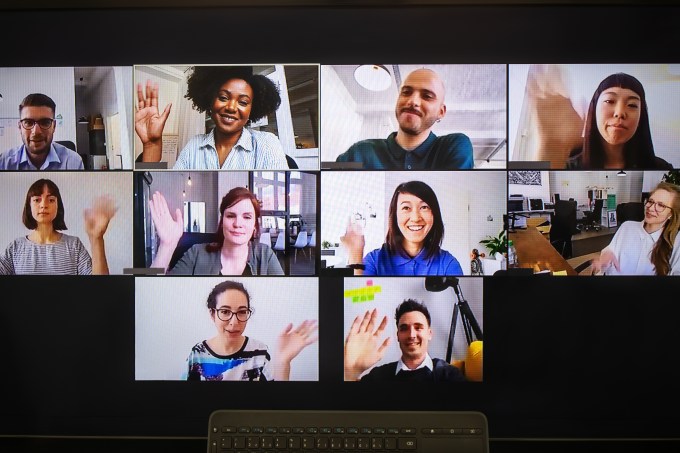Covid-19 has massively accelerated the transition to a hybrid model of working, but what does it mean and what impact will it have on businesses post pandemic?
When lockdown kicked in many of us instantly transitioned to working from home, and it seems that remote working here to stay. According to a new study for the International Facility Management Association (IFMA), 81% of SMEs expect more than a quarter of employees to work remotely most of the time, even when the pandemic is over – and even more so in tech.
That finding has huge implications for the way we work, and what ‘being at work’ actually means. Remote working is not just working from home; it could also mean working from a client’s premises, your neighborhood co-working space or a coffee shop down the road. In most cases this hybrid model will still mean working in the office for at least once a week, but the office will no longer be the main arena of work. Instead it will operate as a welcoming, well-provisioned hub for a fluid and dispersed workforce.
In this scenario the office transforms from a place where you have to be, to somewhere you want to be, some of the time. It might feature hot desks, creative and entertaining spaces, digital showcases and coffee bars. It will become a place for collaboration, face-to-face meetings and team bonding, while more everyday functions happen elsewhere.

©️ Getty
This isn’t a pipedream. Many companies are already reviewing their office estates, and the IFMA survey finds that 56% of SMEs expect a shift in company budgets away from the physical workplace and towards improving employee digital experiences. Technology will be key to all this. A ‘work anywhere’ mentality requires employees to be equipped with the digital tools and applications they need to be productive wherever they happen to be. But more remote working means more phone calls, more video conferences and the daily stresses that we all experience when your tech or audio equipment isn’t up to scratch.
Hybrid by design
If businesses get it right, the hybrid workplace model has significant benefits. Organisations can cut the cost of office space while meeting sustainability goals. Offering flexible working as standard can help in the recruitment and retention of talent. A large and growing body of evidence points to the fact that employees value the option to work away from the office, as long as they have the tools to do so efficiently.
The Covid lockdown was effectively a mass experiment in home working, and one that many businesses and employees feel was at least a partial success. A longer term hybrid working model will have to be a much smoother and more considered experience and connectivity coupled with access to digital tools will be crucial. Employees will expect to be able to collaborate as freely remotely as they can in the office. And the IMFA study findings highlighted that employers now are focusing their investment in providing the digital tools, equipment and training for remote workers to ensure that workplace productivity – wherever that may be – isn’t affected by outdated tech.

©️ Getty
Just as important, the emotional and psychological impact on employees will have to be considered. If employees can’t communicate freely and naturally, remote working can be isolating – and the challenge of poor calls and connectivity can be draining in itself. This switch to virtual has led to an increase in the number daily micro-frustrations workers are experiencing. We didn’t design our homes to work in and background noise coupled with technology issues often have us on calls missing vital information or asking for individuals to be repeat themselves. “If you’ve ever experienced a day filled with interrupted and inefficient calls it can feel exhausting,” explains Jesper Kock, Vice President of Research and Development at audio solutions leader EPOS. “This is because the brain is wasting unnecessary energy and cognitive capacity to focus on the relevant and desired sound”.
The need for peace
While these challenges are real, they are far from insurmountable. The latest video conferencing and Voice over IP (VoIP) telephony encourage smooth and spontaneous communication. Software as a Service (SaaS) applications in the cloud let colleagues seamlessly collaborate on projects wherever they happen to be. Managers need to ensure that teams are linked virtually at any time, and physically whenever the opportunity arises.
But one challenge of hybrid working that may be less obvious at the outset is noise disturbance. For many employees, noisy, cramped homes are not an ideal working environment. “With much of the global workforce continuing to work remotely, background noise continues to be a major threat not only to our productivity but to our health,” explains Kock. “With workers largely unaware of its effects, it is only by addressing these concerns that we can begin to unlock new levels of wellbeing and productivity.”

©️ Getty
Robust audio and video communication is critical to support hybrid working, but a growing body of research has found that even low level noise of the wrong kind can hamper effective communication and increase levels of stress.
According to studies by EPOS, 95% of workers admit that concentration and efficiency at work are negatively affected by noise. The situation is likely to be made more acute by hybrid working. The background chatter of colleagues can be a disturbance, but so can noisy children, barking dogs or the clatter of working in a coffee shop.
And noise becomes a more pressing issue when so much communication and collaboration is carried out virtually. The EPOS study calculated that end users are losing around 29 minutes of productive time each week, or three full work days a year, due to poor sound quality on voice calls. Outcomes of poor audio included losing key pieces of work, dissatisfied clients and failed pitches. Employees who regularly struggle to hear audio in adverse listening situations can experience exhaustion – so called ‘brain fatigue’ – and impaired performance.
Technology again provides an answer, if businesses invest wisely. The challenge of poor audio is exacerbated when remote employees use basic communications tools for professional purposes. On the other hand, companies who pair professional noise-cancelling audio headsets with business-grade communications and collaboration services are far more likely to reap the full benefits of new ways of working. The hybrid model offers huge advantages for businesses and their employees, but only if challenges surrounding communication and collaboration are met.
EPOS is a pioneer of exceptional audio and video conferencing solutions. Find out how EPOS Enterprise products can help your business today…